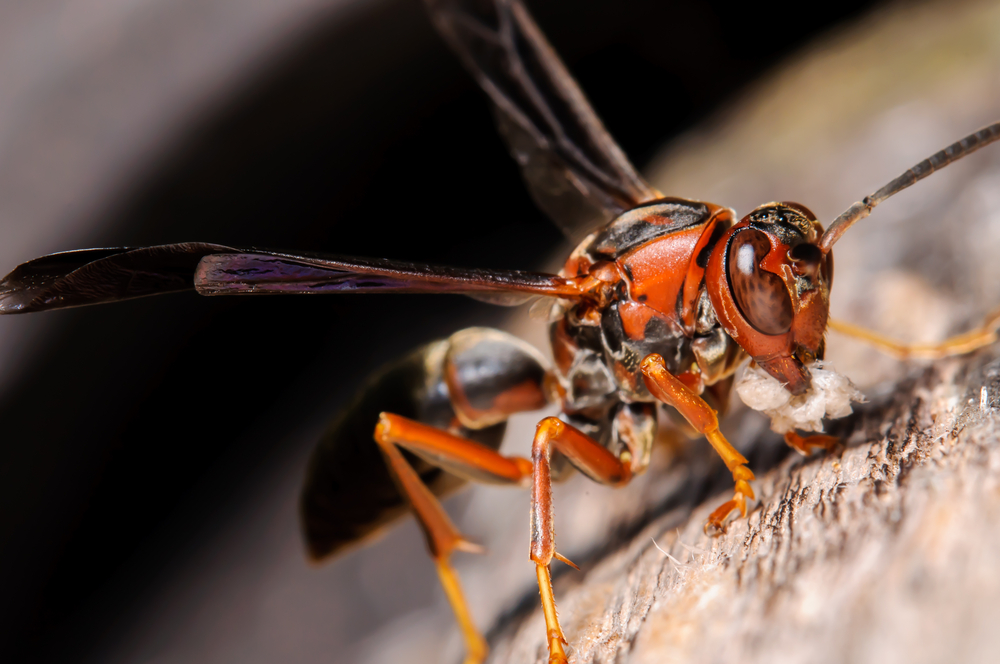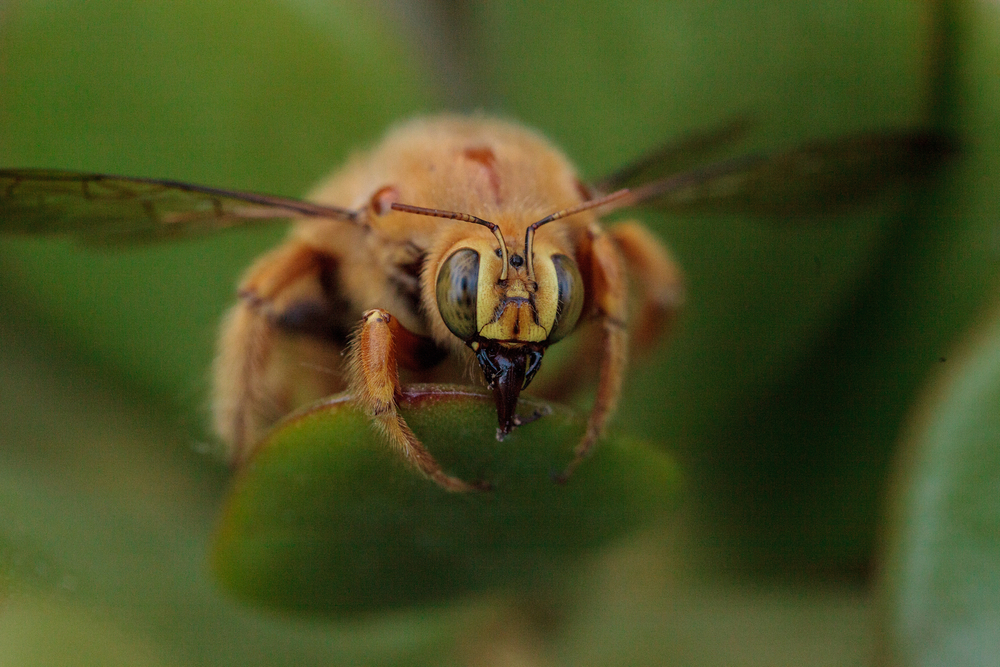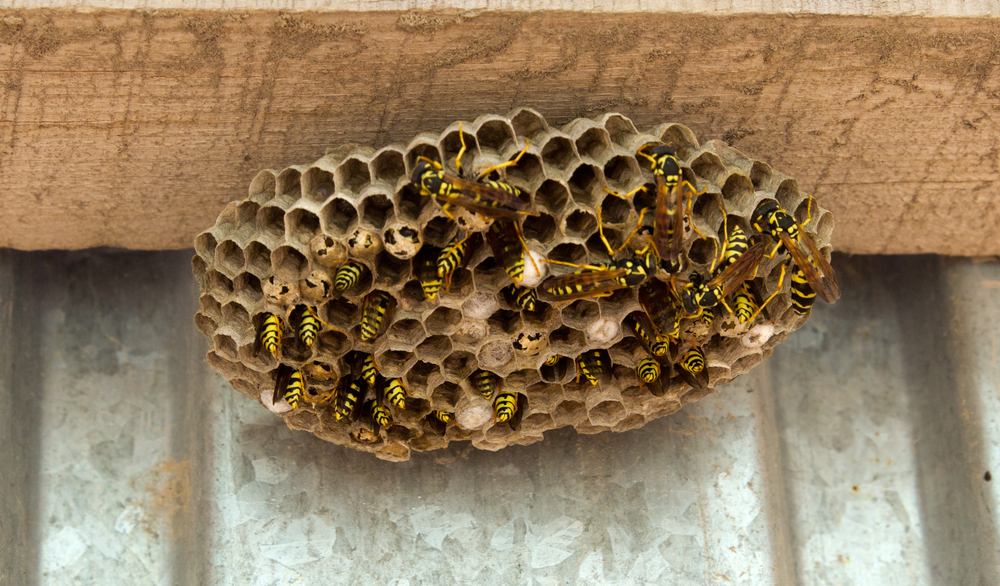Yellow jackets are a diverse group of wasps belonging to the genus Vespula and Dolichovespula. There are several species within these genera, each with its own characteristics and distribution.
About
The Yellow Jacket is a group of predatory insects belonging to the order Hymenoptera. They are known for their striking yellow and black coloration, often resembling bees, but they are distinct in their behavior and ecological roles.
Within the Animal Kingdom, the yellow jacket is placed in the Phylum Arthropoda, Class Insecta, and Order Hymenopera, which includes ants, bees, wasps, and sawflies. The Family is Vespidae (Social Wasps).
Yellow jackets are social insects, meaning they live in colonies with distinct castes, including workers, drones (males), and a queen. They build paper nests made from chewed wood fibers mixed with saliva, which are usually concealed in underground burrows, trees, or structures.
These insects are known for their aggressive defense of their nests and are capable of delivering painful stings. Unlike honeybees, yellow jackets can sting multiple times without dying.
Yellow jackets are opportunistic predators and scavengers, feeding on a variety of insects, carrion, and sugary substances like nectar and fruit. They play essential roles in ecosystems by helping control insect populations and assisting in the decomposition of organic matter.
While their stings can be problematic for humans, yellow jackets are valuable contributors to natural ecosystems, making them a significant component of the animal kingdom’s diverse insect fauna.
Physical Characteristics
Yellow jackets are distinct in their physical appearance, characterized by their striking coloration and body structure:
Physical Appearance:
- Coloration: Yellow jackets have a vibrant yellow and black coloration, which sets them apart from other wasp species.
- Body Shape: They have a slender, elongated body with a distinct waist, similar to other members of the order Hymenoptera.
- Size: Yellow jackets vary in size, but they typically measure between 0.5 to 1 inch (1.27 to 2.54 cm) in length.
- Wings: Like other wasps, they have membranous wings that are folded longitudinally when at rest.
- Eyes: Yellow jackets have large, compound eyes that facilitate their visual perception.
- Antennae: They possess long, slender antennae that aid in detecting environmental cues and locating food.
Weight:
- The weight of a single yellow jacket can vary, but they are generally lightweight insects, weighing only a fraction of a gram.
Metric Measurements:
- Size: Approximately 1.27 to 2.54 cm in length.
- Weight: Typically less than a gram.
Yellow jackets are known for their sleek and colorful appearance, which is often associated with their aggressive behavior and defensive instincts when protecting their nests.
Reproduction
Yellow jackets, like other social wasps, have a unique reproductive cycle characterized by caste differentiation within the colony. Here’s an overview of their reproductive process:
Queen Establishment:
- In spring, a mated queen emerges from hibernation. She seeks a suitable nesting site, often in an underground burrow or other concealed location.
- The queen lays the initial batch of eggs, which she fertilizes using stored sperm from her previous mating. These eggs hatch into female workers.
- The queen takes on the responsibility of caring for the first generation of larvae.
Worker Phase: 4. As the first generation of worker larvae develop, the queen continues to lay eggs. These eggs hatch into more workers, and the colony’s population begins to increase.
- Worker yellow jackets are sterile females. They assume various tasks within the colony, including foraging for food, caring for larvae, and defending the nest.
Male and Queen Production: 6. Later in the season, the queen shifts her focus to producing new queens and male drones. These eggs are laid unfertilized.
- When the new queens and drones mature, they leave the nest to mate. This mating occurs outside the colony.
Colony Decline: 8. Once mating is complete, the male drones die, and the newly mated queens search for suitable hibernation sites to survive the winter.
- As winter approaches, the worker population decreases, and the original queen typically dies.
- The colony, including most workers, disintegrates, and only the newly mated queens hibernate through the winter to establish new colonies the following spring.
Gestation and Young:
- Yellow jackets do not have a traditional gestation period. Instead, the queen continuously lays eggs throughout the season.
- The number of eggs laid and the timing of their development depend on factors such as environmental conditions and the colony’s needs.
The reproductive cycle of yellow jackets is complex, with different castes and stages serving specific roles within the colony. It ensures the survival and expansion of the colony over multiple generations while maintaining a balance of sterile workers, new queens, and male drones.
Lifespan
The lifespan of a yellow jacket varies depending on its caste within the colony:
- Queen:
- In the wild, a mated queen can live for several years if she successfully establishes a new colony.
- In captivity, queens can be kept for research or observation, but their lifespan may be shorter due to factors like confinement and limited resources.
- Workers:
- Worker yellow jackets, the sterile females, have a relatively short lifespan.
- In the wild, workers typically live for a few weeks to a few months during the summer when the colony is active.
- In captivity, workers may live longer if provided with a constant supply of food and protection from environmental hazards.
- Males (Drones):
- Male yellow jackets have the shortest lifespan among all castes.
- Their primary purpose is mating, and they die shortly after mating with new queens.
- Males typically do not survive the winter.
Biggest Threats:
- Predators: Yellowjackets face threats from various predators, including birds, spiders, and other insects that may prey on them or their larvae.
- Parasites: Certain parasitoid wasps and flies lay their eggs on or inside yellow jackets, leading to the eventual death of the host.
- Environmental Factors: Harsh weather conditions, such as extreme cold or heavy rain, can pose a threat to yellow jacket colonies and reduce their survival rates.
- Human Interactions: Humans often consider yellow jackets as pests due to their stinging behavior. People may attempt to eliminate colonies, which can disrupt their natural lifecycle.
Overall, yellow jackets have relatively short lifespans, with individual castes fulfilling specific roles within the colony. While they face various threats in the wild, their ability to establish new colonies each season helps maintain their populations.
Eating Habits
Yellow jackets are carnivorous predators and scavengers known for their diverse diet. Here’s a description of their eating habits and how they gather food:
Diet:
- Protein: Yellow jackets primarily feed on protein-rich foods, including:
- Insects: They hunt various insects and arthropods to provide protein for the colony, such as caterpillars, flies, and spiders.
- Meat: They are attracted to meat and carrion, making them frequent visitors to outdoor picnics and barbecues.
- Other Arthropods: Yellow jackets may capture and consume other wasps, bees, and ants.
- Sugars: In addition to protein, they also have a sweet tooth and consume sugary substances:
- Nectar: They visit flowers to collect nectar, and in the process, they assist in pollination.
- Fruits: Yellow jackets are attracted to ripe fruits and may feed on juices from damaged or overripe fruits.
- Sugary Fluids: They are known to scavenge sugary substances, such as spilled soda or fruit juice.
Foraging Behavior:
- Yellow jackets are highly opportunistic foragers. Workers leave the nest in search of food, guided by visual and olfactory cues.
- They are efficient hunters and can capture prey larger than themselves, often paralyzing it before bringing it back to the colony.
- When foraging for sugary foods, they may be attracted to open containers, food scraps, or sugary substances left by humans.
Storage and Sharing:
- Yellow jackets feed not only themselves but also their colony members.
- Prey items are chewed into smaller pieces and shared with larvae in the nest, providing essential protein for the developing young.
- Sugary foods may be regurgitated to share with other colony members.
Yellow jackets’ diverse diet and efficient foraging behavior make them valuable scavengers and predators in ecosystems, helping control insect populations and assisting in pollination. However, their scavenging behavior can also bring them into conflict with humans, especially at outdoor gatherings where food is present.
Uniqueness
Yellow jackets, like other members of the wasp family, possess several unique characteristics that distinguish them from other insects:
- Striking Coloration: Their vibrant yellow and black coloration is instantly recognizable and sets them apart from many other wasp and bee species. This coloration serves as a warning signal to potential predators, indicating their ability to deliver painful stings.
- Social Structure: Yellow jackets are social insects, living in colonies with distinct castes, including a queen, sterile female workers, and male drones. This social structure allows for complex behaviors, division of labor, and colony defense.
- Predatory Behavior: Yellow jackets are skilled hunters, capturing a variety of prey, including insects and other arthropods. Their predatory nature helps control pest populations in ecosystems.
- Scavenging: In addition to hunting, yellow jackets are scavengers that seek out sugary substances like nectar, fruit juices, and human food scraps. This dual feeding strategy makes them adaptable to various food sources.
- Nesting Behavior: They build paper nests using chewed wood fibers mixed with saliva. These nests are often concealed in underground burrows, trees, or structures, providing protection for the colony.
- Colony Defense: Yellow jackets are known for their aggressive defense of their nests. When threatened, they can deliver painful stings multiple times without dying, unlike honeybees.
- Environmental Roles: They play essential roles in ecosystems by controlling insect populations, pollinating flowers while foraging for nectar, and assisting in the decomposition of carrion and organic matter.
- Seasonal Cycles: Yellow jackets have distinct seasonal cycles, with colonies starting in the spring, reaching their peak in the summer, and declining in the fall. New queens hibernate through the winter to establish colonies the following year.
- Human Interaction: They are often considered pests due to their ability to disrupt outdoor activities and their attraction to human food. This interaction with humans can lead to conflicts and attempts to eliminate nests.
Overall, the unique combination of their appearance, social structure, feeding habits, and ecological roles makes yellow jackets fascinating and important members of the insect world, although they can also pose challenges in certain situations.
FAQ’s
1. How many types of Yellow Jackets are there?
2. What are some of the more popular types of Yellow Jackets?
Some of the common species of yellow jackets include:
- Common Yellow Jacket (Vespula vulgaris): Found in Europe and North America, it’s known for its aggressive behavior and painful stings.
- Eastern Yellow Jacket (Vespula maculifrons): Native to North America, it’s one of the most common species and often builds underground nests.
- Western Yellow Jacket (Vespula pensylvanica): Also found in North America, it nests in various locations, including underground, in trees, and in buildings.
- German Yellow Jacket (Vespula germanica): Native to Europe, it has become invasive in other parts of the world, including North America. It’s known for its distinctive black antennae.
- Baldfaced Hornet (Dolichovespula maculata): Although it’s called a “hornet,” it’s actually a type of yellow jacket. It’s found in North America and known for its large, paper nest.
- European Hornet (Vespa crabro): While not a yellow jacket, it’s a related species found in Europe and North America. It’s larger than most yellow jackets and builds paper nests in trees and shrubs.
These are just a few examples, and there are more species and subspecies of yellow jackets with varying distributions and behaviors. While they share common characteristics, different species may exhibit slight variations in appearance, behavior, and nesting preferences
3. How does the Yellow Jacket's sting compare to other wasps?
The sting of a Yellow Jacket is often considered more painful and potentially more dangerous than stings from some other wasps, though this can vary depending on the species of wasp and individual reactions. Here’s a comparison based on various factors:
- Pain: The pain from a Yellow Jacket sting is generally considered to be quite intense. The Schmidt Sting Pain Index, which rates the pain of stings from various insects, ranks Yellow Jacket stings as quite painful, though certain other wasps like the Tarantula Hawk have stings that are rated even more painful.
- Venom Composition: Yellow Jackets, like other wasps, inject venom when they sting. The venom of Yellow Jackets contains a mix of toxins, enzymes, and other substances that can cause pain, swelling, and allergic reactions. The specific composition of venom can vary among different wasp species, leading to different effects.
- Aggressiveness: Yellow Jackets are known for their aggressiveness, especially when their nest is disturbed. They are more likely to attack in a group, which can lead to multiple stings. This aggressiveness can make encounters with Yellow Jackets more dangerous than with other wasps that are less prone to swarm or less aggressive.
- Sting Mechanism: Yellow Jackets and other wasps can sting multiple times. This is different from bees, which have a barbed sting and die after stinging once. The ability to sting multiple times means that a person can receive multiple doses of venom from a single Yellow Jacket or from a group, increasing the potential for pain and a severe reaction.
- Allergic Reactions: As with stings from other wasps and bees, Yellow Jacket stings can cause allergic reactions in some people. The severity of these reactions can vary greatly. Some people may experience only minor swelling and pain, while others may have severe reactions, like anaphylaxis, which can be life-threatening and requires immediate medical attention.
It’s important to note that individual reactions to wasp stings can vary greatly, and what is a minor nuisance to one person can be a serious health threat to another, especially if there are allergies involved or if the person is stung multiple times.
Related Family Species
Sources
- Britannica, Yellow Jacket, https://www.britannica.com/animal/yellow-jacket, retrieved January 2024.
- Burnie, David & Wilson, Don, Animal, Smithsonian Institute, Washington DC.
- Hickman et al, Integrated Principle of Zoology, McGraw Hill, Boston.







































































